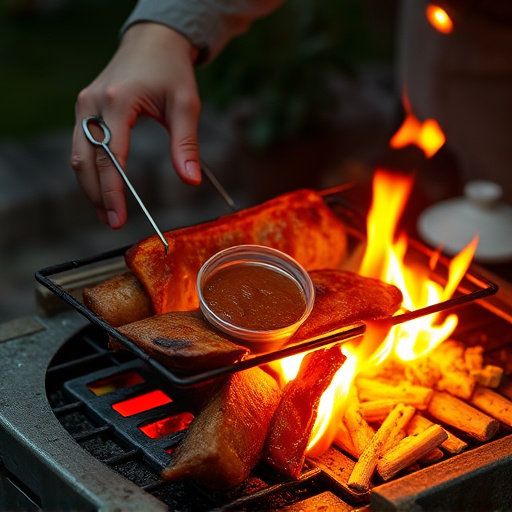Selecting tender, marbled cuts like shoulder or butt ends for your pork BBQ is key. Seasoning and marinades enhance flavor and tenderness. Maintain a consistent 225-250°F (107-121°C) smoker temperature using wood chips, coals, and humidity. Aim for internal temp of 145°F (63°C) for safe, juicy pork BBQ. Pair with sides like coleslaw, baked beans, corn, mashed potatoes, and salads to complete the experience. Use techniques like adding liquid, monitoring temperature, adjusting heat, and using parchment paper for optimal slow-cooked results.
Unleash the mouthwatering magic of tender, slow-cooked pork BBQ in your own backyard! This comprehensive guide takes you on a journey from choosing the perfect cut of meat to mastering the art of smoking. Learn how to season and marinate for maximum flavor, set up your smoker like a pro, and perfectly gauge internal temperatures. Discover delicious serving suggestions, troubleshoot common issues, and elevate your pork BBQ game with these expert tips.
- Choosing the Right Cut of Pork for Slow Cooking
- Seasoning and Marinades: Enhancing Flavor
- Setting Up Your Smoker for Low and Slow Cooking
- The Art of Smoking Pork BBQ: Techniques and Tips
- Measuring Internal Temperature: Ensuring Tender Meat
- Serving Suggestions and Side Dishes
- Troubleshooting Common Issues During Slow Cooking
Choosing the Right Cut of Pork for Slow Cooking
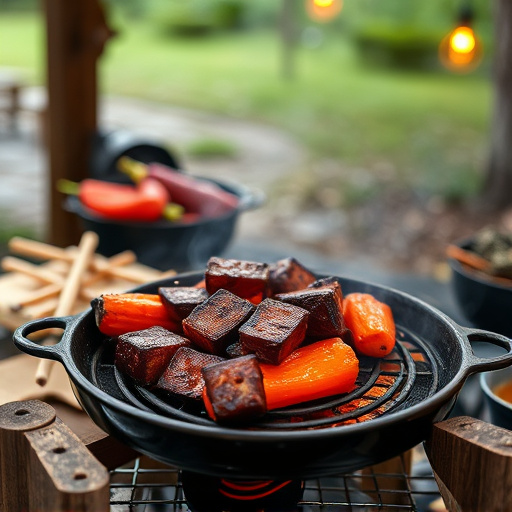
When it comes to slow-cooking tender, juicy pork that’s perfect for a backyard BBQ recipe, choosing the right cut is key. Look for a fatty, meaty portion with visible marbling; this ensures the meat stays moist and flavorful during the low-and-slow cooking process. A popular choice is the shoulder or butt end of the pork, as these cuts are packed with flavor and collagen, which breaks down to create incredibly tender results.
Consider a packer cut or a top butt roast for your pork BBQ recipe. These cuts are ideal because they benefit greatly from slow cooking, resulting in meat that’s so tender it practically falls apart. The slow and low method allows the fat to render, adding rich flavor and keeping the pork juicy, making it a favorite among those who love a hearty, delicious pork dish.
Seasoning and Marinades: Enhancing Flavor
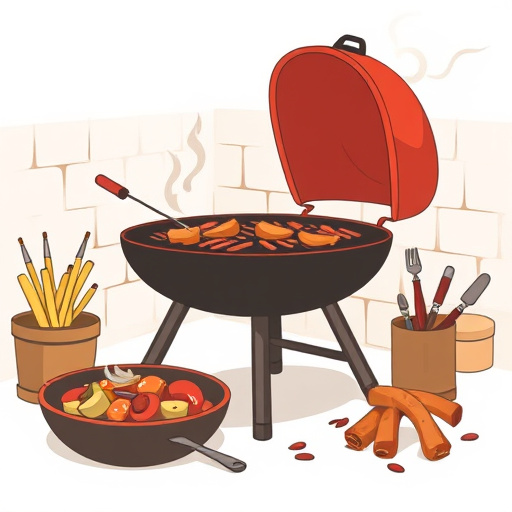
Seasoning and marinades play a pivotal role in transforming simple pork into an irresistible backyard favorite. A well-crafted marinade or seasoning blend can enhance flavor, tenderize the meat, and add a unique character to your pork BBQ recipe. When it comes to low-and-slow cooking methods, such as smoking or braising, the right combination of spices and acids can make all the difference.
For instance, a basic dry rub consisting of salt, pepper, garlic powder, and paprika not only seasons the meat but also helps draw out its natural juices during the slow cooking process. For a more in-depth approach, consider using a marinade infused with citrus juices, herbs like rosemary or thyme, and a touch of honey or brown sugar. These ingredients work together to break down collagen, resulting in tender, juicy pork that melts in your mouth. Experimenting with different marinades allows you to create diverse flavors, making each pork BBQ recipe a unique experience for your taste buds.
Setting Up Your Smoker for Low and Slow Cooking

To master the art of cooking tender pork BBQ low and slow, preparing your smoker is key. The ideal setup involves maintaining a consistent temperature range between 225°F to 250°F (107°C to 121°C). This can be achieved by using a combination of wood chips or chunks for flavor, positioning the coals strategically, and ensuring even air circulation. A water pan placed in the smoker’s bottom helps maintain humidity, preventing the pork from drying out during the lengthy cooking process.
Consider the type of smoker you have—charcoal, gas, or electric—and adjust your preparation accordingly. Charcoal smokers may require more attention to control heat, while gas and electric models offer easier temperature regulation. Regardless of the setup, the goal is to create an environment that allows the pork to cook slowly, resulting in those mouthwatering, tender slices often associated with the best pork BBQ recipes.
The Art of Smoking Pork BBQ: Techniques and Tips
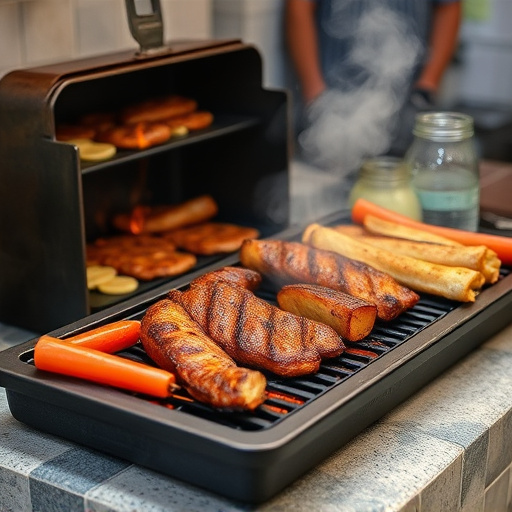
The art of smoking pork BBQ is a beloved tradition, transforming simple pork into a mouthwatering culinary delight. It’s all about patience and precision—a process that takes time but yields unparalleled flavors. When it comes to smoking pork, understanding different techniques is key. The low-and-slow method is a favorite among enthusiasts, allowing the meat to cook gently over indirect heat, resulting in tender, juicy pork. This approach is ideal for larger cuts like shoulders or buts, ensuring they remain moist and flavorful.
For a successful pork BBQ recipe, choose high-quality, well-marbled cuts. Prepare your smoker by maintaining an even temperature, typically between 225°F to 250°F (107°C to 121°C). This gentle heat works its magic, breaking down collagen and transforming it into delicious gelatin, making the pork incredibly tender. Experiment with different woods for smoking—hickory, oak, or mesquite each impart unique aromas and flavors, allowing you to customize your BBQ experience.
Measuring Internal Temperature: Ensuring Tender Meat
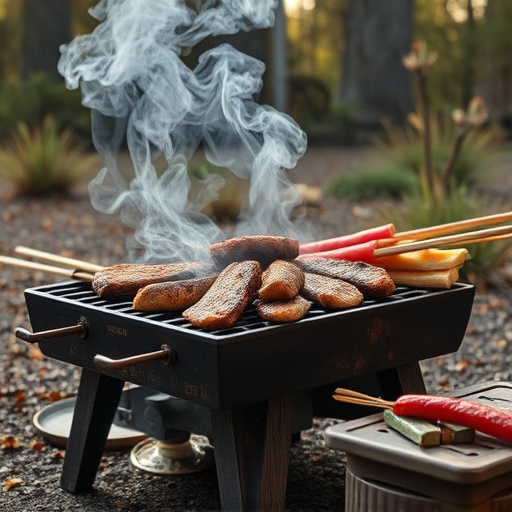
When cooking pork for a BBQ recipe, one of the best ways to ensure tender meat is by measuring its internal temperature. Aim for an internal temperature of 145°F (63°C) for safely cooked pork. This is especially important when preparing a backyard favorite like tender pork cooked low and slow. Using a meat thermometer helps you monitor the cooking progress, preventing overcooking which can lead to tough meat.
By keeping an eye on the internal temperature, you can achieve that perfect level of tenderness. Whether it’s a juicy roast or pulled pork, maintaining the right heat ensures the collagen in the meat breaks down, resulting in a deliciously soft and succulent dish. Remember, slow and low is the key to unlocking the full potential of your pork BBQ recipe.
Serving Suggestions and Side Dishes
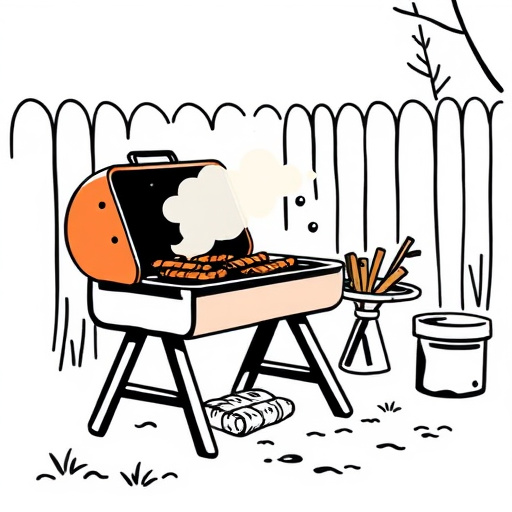
After hours of slow cooking, your tender pork bbq recipe is ready to be served—a true delight for any backyard gathering. For a satisfying meal, pair the juicy pork with a selection of complementary sides. Consider classic options like coleslaw, offering a crisp contrast to the rich meat, or baked beans, adding a hearty and sweet flavor profile. Corn on the cob, charred to perfection, brings a summery touch, while mashed potatoes provide a comforting base. For a vibrant plate, include fresh salads with tangy dressings, ensuring every bite is an explosion of flavors. These side dishes will enhance the overall dining experience, making your pork bbq recipe the star of any casual or formal gathering.
Troubleshooting Common Issues During Slow Cooking

When slow-cooking tender pork for your backyard BBQ, several common issues can arise that might affect the final dish. One of the main challenges is keeping the meat moist and preventing it from drying out, especially when cooking for an extended period. To combat this, ensure you use a good quality cut of pork with natural marbling and consider adding liquid such as broth or apple juice to the cooking process. Another issue could be achieving the right level of doneness; overcooking can make the pork tough. Use a meat thermometer to monitor the internal temperature, aiming for 145°F (63°C) for safe consumption. If the pork becomes too dry during cooking, add a splash of water or beer partway through the process to retain moisture and enhance flavor.
For optimal results with your pork BBQ recipe, consider the cooking environment as well. High temperatures or direct heat can disrupt the slow-cooking process, so choose a cooler setting and use indirect heat methods where possible. If the meat sticks to the pot, line it with parchment paper or use a non-stick coating to make lifting and flipping easier. Lastly, be mindful of seasoning; over-salting can draw out moisture, so season sparingly and adjust according to taste as the pork cooks.
